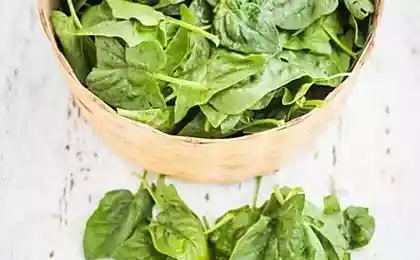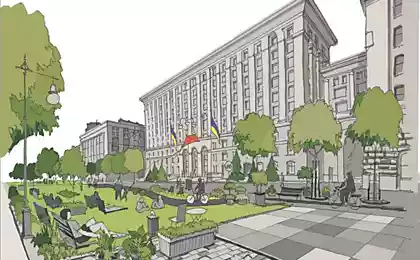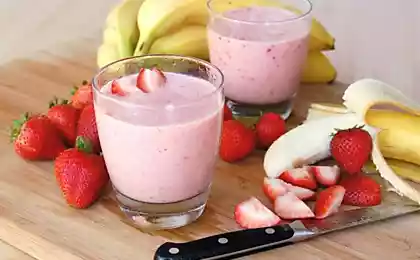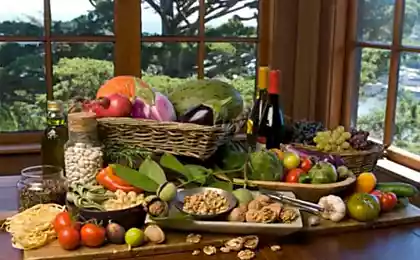481
Spinach—choose,store,prepare
Spinach not so long ago became popular with Europeans – from the XI century. Presumably it comes from ancient Persia – modern Iran. From there, the plant came to Nepal, and then, in the VII century, migrated to China as a Royal gift to the Emperor. The Moors brought it to Africa and to the XI century spinach "came" to Spain. Until recently it was called the "Spanish vegetable". Catherine de Medici loved spinach, which the chef skillfully prepared. After leaving his native Florence to marry the king of France, she goes and cooks, and spinach with me. Since dishes recipes salmon spread on a bed of spinach, are the prefix "Florentine".
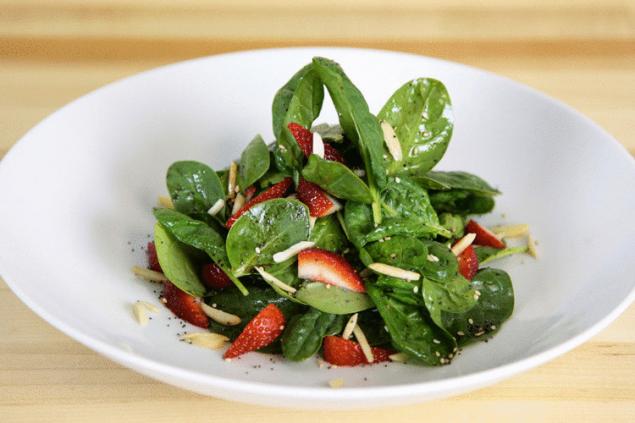
The legendary cartoon character Popeye in difficult times ate Bank synata, and it gave him superpowers and helped to solve all the problems. What is miraculous is fraught with spinach? Rich in lutein and zeaxanthin. As powerful antioxidants, these carotenoids affect the retina and macula of the eye. Yet research on the role of spinach in the prevention and treatment of diseases of the eye, but it is highly likely that it can fight age-related macular degeneration – a disease that leads to blindness. One serving of spinach (180 grams) contains: vitamin K – almost 1,000% of the daily consumption of vitamin A – 100%, manganese – 84%, folate – 65% magnesium – 40% iron – 35%, copper 34%, vitamin B2 – 32%, vitamin B6 – 26%, vitamin E 25%, calcium, potassium and vitamin C – 24% and other vitamins and minerals. Vitamin K, which, as you can see, the spinach very much, helps bones to stay healthy.
One study found that elderly people who consumed at least 0.1 milligrams of vitamin K per day (that portion of spinach covered with a vengeance) 30% decrease in the probability of hip fracture compared with those who did not receive enough of this vitamin. Another study by Japanese scientists, who studied bone problems in women with liver cirrhosis, found that vitamin K significantly reduced the development of liver cancer. The researchers found that spinach counteracts even the aggressive-term type of prostate cancer. That it is part since fighting cancer is unclear, but there are two suspects: neoxanthin and violaxanthin. They significantly reduce inflammation in the body. Extract of spinach can slow down cell division in stomach cancer and skin cancer, reduces the risk of breast cancer in women. However, eating spinach, of course, cannot replace the assigned therapy. Maybe Popeye was right, having always on hand a jar of spinach?
HOW to CHOOSE, COOK AND STORE CHOOSE unfortunately, progress does not always bring only good. Today we need to eat 10 servings of spinach to get the same amount of minerals contained in one serving 50 years ago. With some minerals and even worse: the iron content of spinach today to 60 times less, and vitamin E by 25 times less than in 1948. Other unpleasant thing – the spinach absorbs pesticides and is always in the list of the most contaminated with these chemicals vegetables. So you should, if possible, choose organically grown spinach. The leaves should be bright and rich in color. This means that in the plant a large supply of vitamin C.
STORED Spinach tolerates storage for several days in a raw form, at a temperature of about 4°C. the product can be exposed to light, it will help to preserve vitamins.
PREPARING This plant contains oxalic acid. To get rid of it, drop the spinach into boiling water and cook for one minute. The lid does not close – it will help to get the acid and water should be poured. To digest should not be too not to lose valuable vitamins. Keep already-cooked spinach is not recommended.
WARNING Spinach contains purines and oxalic acid, so people with kidney disease, gall bladder and gout it is better to limit consumption or do not eat.
Source
Source: /users/155

The legendary cartoon character Popeye in difficult times ate Bank synata, and it gave him superpowers and helped to solve all the problems. What is miraculous is fraught with spinach? Rich in lutein and zeaxanthin. As powerful antioxidants, these carotenoids affect the retina and macula of the eye. Yet research on the role of spinach in the prevention and treatment of diseases of the eye, but it is highly likely that it can fight age-related macular degeneration – a disease that leads to blindness. One serving of spinach (180 grams) contains: vitamin K – almost 1,000% of the daily consumption of vitamin A – 100%, manganese – 84%, folate – 65% magnesium – 40% iron – 35%, copper 34%, vitamin B2 – 32%, vitamin B6 – 26%, vitamin E 25%, calcium, potassium and vitamin C – 24% and other vitamins and minerals. Vitamin K, which, as you can see, the spinach very much, helps bones to stay healthy.
One study found that elderly people who consumed at least 0.1 milligrams of vitamin K per day (that portion of spinach covered with a vengeance) 30% decrease in the probability of hip fracture compared with those who did not receive enough of this vitamin. Another study by Japanese scientists, who studied bone problems in women with liver cirrhosis, found that vitamin K significantly reduced the development of liver cancer. The researchers found that spinach counteracts even the aggressive-term type of prostate cancer. That it is part since fighting cancer is unclear, but there are two suspects: neoxanthin and violaxanthin. They significantly reduce inflammation in the body. Extract of spinach can slow down cell division in stomach cancer and skin cancer, reduces the risk of breast cancer in women. However, eating spinach, of course, cannot replace the assigned therapy. Maybe Popeye was right, having always on hand a jar of spinach?
HOW to CHOOSE, COOK AND STORE CHOOSE unfortunately, progress does not always bring only good. Today we need to eat 10 servings of spinach to get the same amount of minerals contained in one serving 50 years ago. With some minerals and even worse: the iron content of spinach today to 60 times less, and vitamin E by 25 times less than in 1948. Other unpleasant thing – the spinach absorbs pesticides and is always in the list of the most contaminated with these chemicals vegetables. So you should, if possible, choose organically grown spinach. The leaves should be bright and rich in color. This means that in the plant a large supply of vitamin C.
STORED Spinach tolerates storage for several days in a raw form, at a temperature of about 4°C. the product can be exposed to light, it will help to preserve vitamins.
PREPARING This plant contains oxalic acid. To get rid of it, drop the spinach into boiling water and cook for one minute. The lid does not close – it will help to get the acid and water should be poured. To digest should not be too not to lose valuable vitamins. Keep already-cooked spinach is not recommended.
WARNING Spinach contains purines and oxalic acid, so people with kidney disease, gall bladder and gout it is better to limit consumption or do not eat.
Source
Source: /users/155

